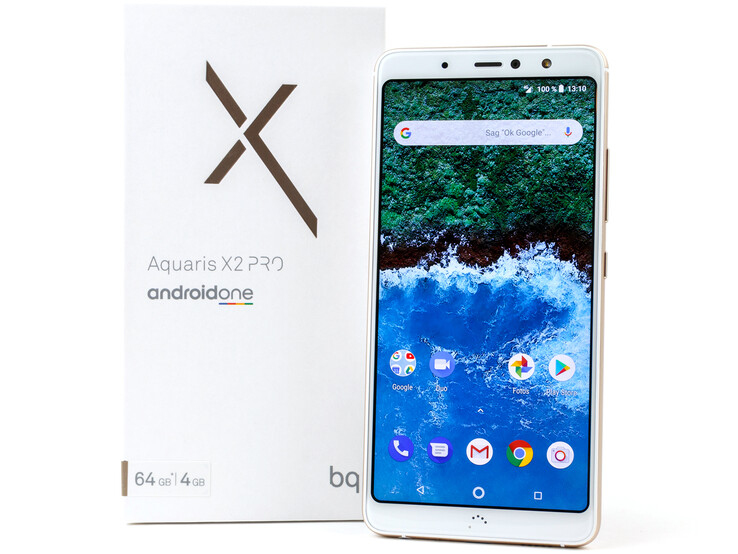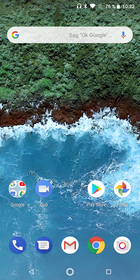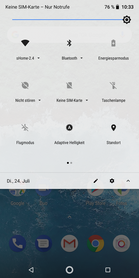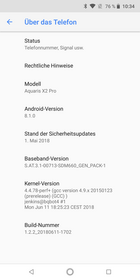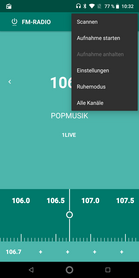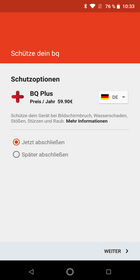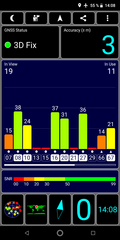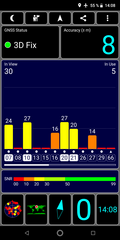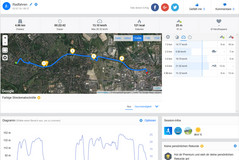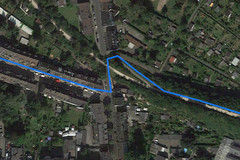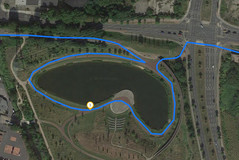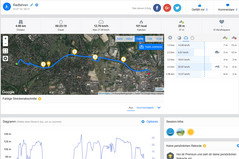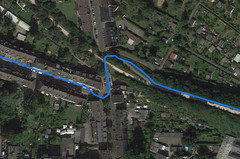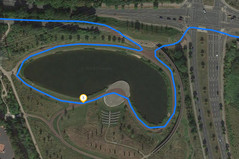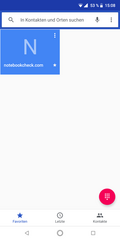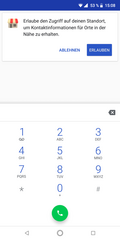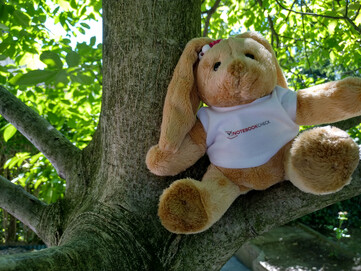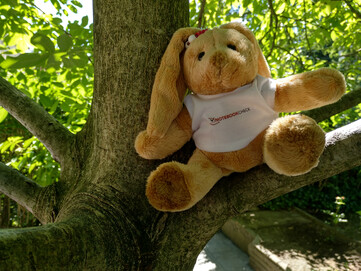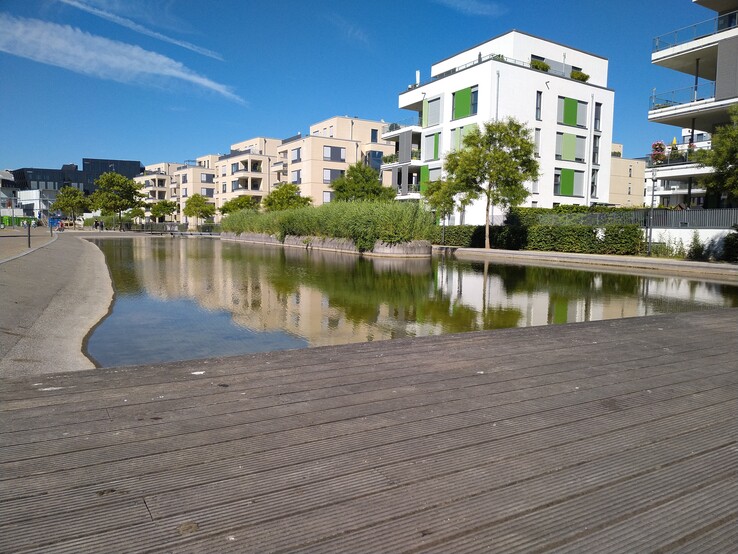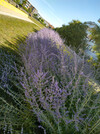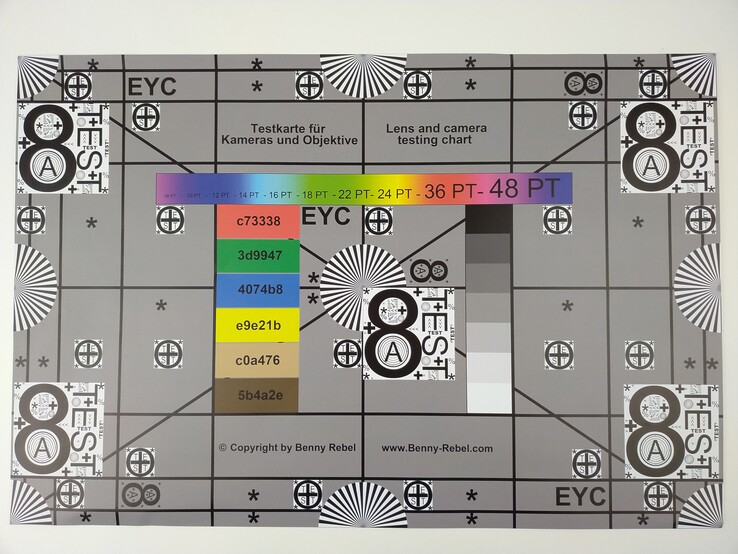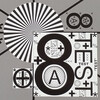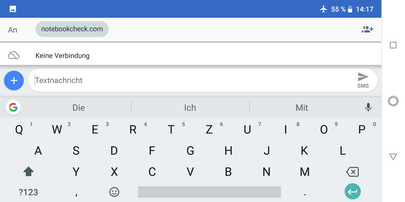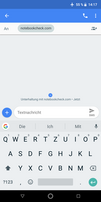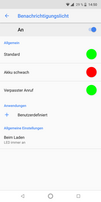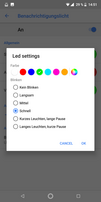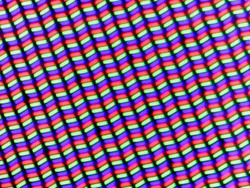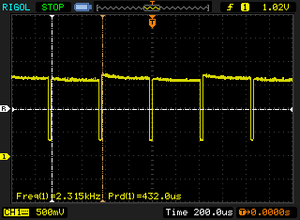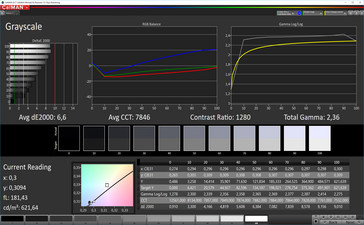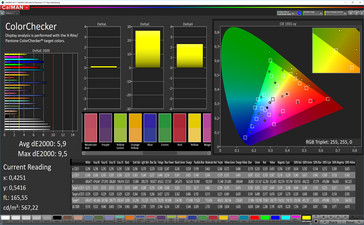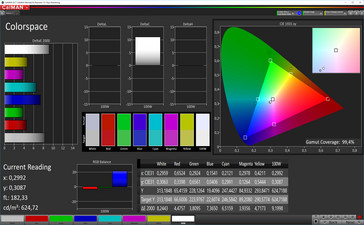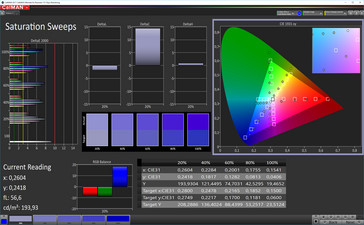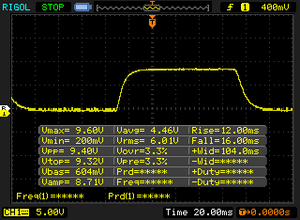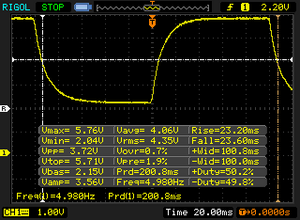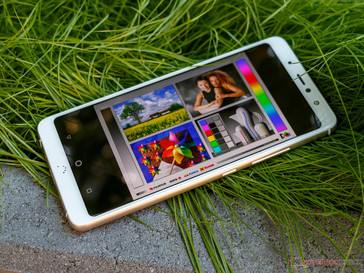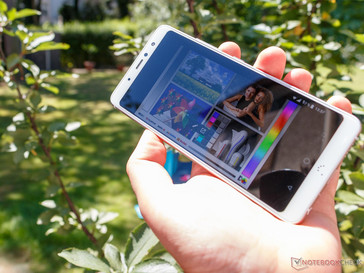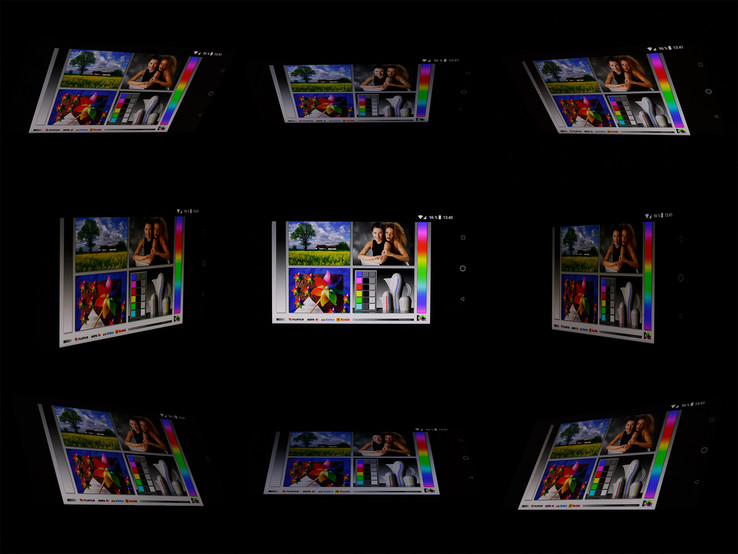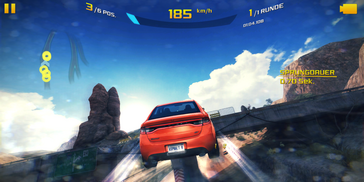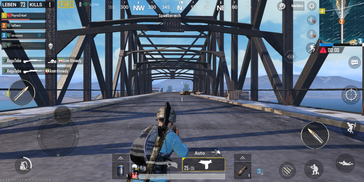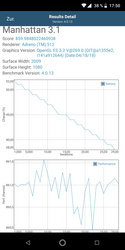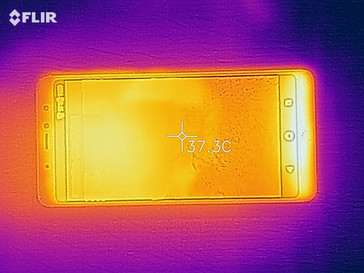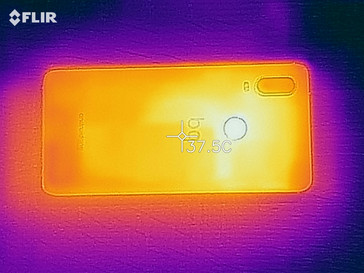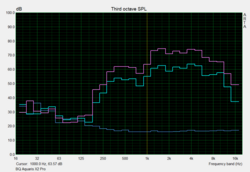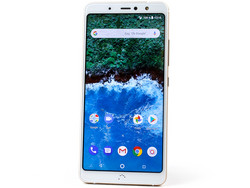BQ Aquaris X2 Pro Smartphone Review
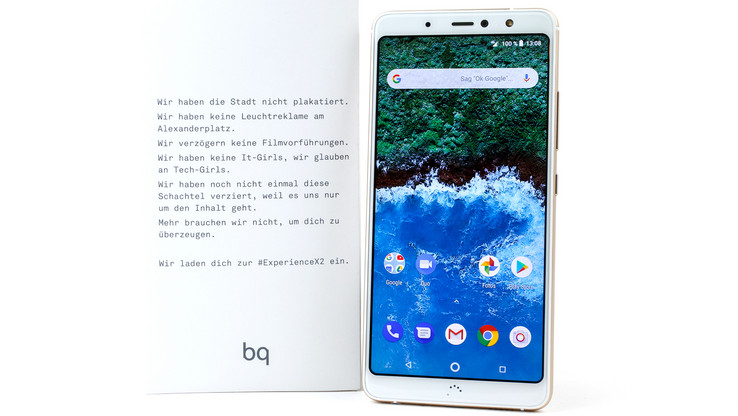
The BQ Aquaris X2 Pro is the Spanish company's current flagship and offers great technical features on its specification sheet. Compared to its predecessor, the Aquaris X Pro, the display's aspect ratio has been changed from 16:9 to 2:1. The resolution has therefore improved slightly to 2160x1080 pixels. The BQ phone is powered by a Snapdragon 660 and has either 4 GB of RAM and 64 GB of internal storage or 6 GB of RAM and 128 GB of internal storage available. The storage capacity can also be expanded via a microSD card that can be placed in the second (hybrid) SIM slot. There is now a dual camera setup on the back, whose sensors are still made by Samsung. The battery capacity remains the same at 3100 mAh. The price has increased to 400 Euros (~$470) for the smaller model and a whole 520 Euros (~$610) for those who require more internal storage - this is quite a premium for a little more storage and a differently colored case.
The BQ Aquaris X2 Pro will be compared to its smaller sibling, the X2, which has less storage and a less powerful SoC. We have also included the Honor 10, the Samsung Galaxy A8, the Nokia 7 Plus and the Motorola Moto Z3 Play in our comparison field. Older smartphones that have dropped into this price range are the Huawei P10 or the Sony Xperia XZ Premium, for example.
Update 8/23/18: BQ has released a new update. Details can be found in the software section.
Case – gap dimensions are not always perfect
The BQ Aquaris X2 Pro is made of Corning Gorilla Glass and aluminum. This is also one of the biggest differences compared to the smaller X2, whose back is made of plastic. The new display design makes the case appear slightly stretched out and it is also a little thicker than the predecessor was. The dual camera module (noticeably) stands out of the back by one millimeter (~0.04 in). The X2 Pro is available in white, black and silver. It is a shame that BQ did not make a bolder move here.
The workmanship is OK, but we did find a few issues with the precision of the various parts, which leads to irregular gap dimensions (see photo). The Aquaris X2 Pro resisted our warp attempts without even making a sound. Due to the display technology, you can see slight waves on the screen if a lot of pressure is applied to it. Overall, the smartphone appears to be very sturdy.
The BQ smartphone is protected against dust and water drops according to the IP52 standard - so it is not completely waterproof. The battery cannot be removed by the user. The card slot is made of plastic, but the cover is aluminum so there is no difference in color on the frame. The tray can contain either two nano-SIM cards or one nano-SIM and one microSD card.
Connectivity – BQ phone with USB 3.1 and DisplayPort
The BQ Aquaris X2 Pro has a Type-C 3.1 (Gen 1) port that supports both OTG and image transmission via cable to HDMI and DisplayPort interfaces. While peripherals and storage devices are easily recognized by the smartphone, we encountered some issues with image transmission. Android is displayed in landscape mode on the external screen, but the X2 Pro's display turns black from then on and does not respond to inputs. It seems that BQ will have to create an update that deals with this issue.
According to the manufacturer's specifications, the microSD card slot supports cards of up to 256 GB. As these belong to the SDXC standard, the smartphone should also be able to read larger cards easily. App data is not supposed to be stored on the optional microSD card, but if you wish to do so, you can activate this in the developer options.
The device also has an FM radio receiver as well as NFC and Bluetooth 5.0.
Software – X2 Pro with Android One and Google Lens
BQ has chosen to install the current Google Android 8.1 Oreo on the Aquaris X2 Pro and use the Android One program which promises updates for two years and security patches for three years directly from Google. Therefore, the phone has pure Android - only the camera app and BQ Plus come from BQ itself.
The BQ X2 series is one of the first smartphone series, apart from the Pixel 2, that can use Google Lens directly in their camera app. The BQ phone also has user account control activated.
Update 8/23/18: BQ has released a new update (410 MB) which enables support for LTE band 8 and updates Google’s security patches, which are now as of July 1st, 2018. In addition, the update also includes various ominous system improvements.
Communication and GPS
There have been no big changes made to the BQ Aquaris X2 Pro's wireless communication options, although the SoC offers a more powerful modem. BQ has still decided to limit its phone to LTE Cat. 6 transfer speeds (downloads of up to 300 MBit/s, uploads of up to 50 MBit/s). The phone also supports very few frequencies. This should not be an issue if you are in a European city, but even the LTE band 8 (900 MHz), which is used a lot in Germany, is missing. Apparently, an update is supposed to change this. Apart from this, reception is good.
The X2 Pro supports the IEEE.802.11 standards a/b/g/n/ac and works both in the 2.4 and 5 GHz bands. The attenuation fluctuates between -38 and -44 dBm at close proximity to the router. This is a good result. The transfer speeds to our reference router Linksys EA8500 are good and at the top of our comparison field.
| Networking | |
| iperf3 transmit AX12 | |
| BQ Aquaris X2 Pro | |
| Nokia 7 Plus | |
| Samsung Galaxy A8 2018 | |
| Motorola Moto Z3 Play | |
| Honor 10 | |
| BQ Aquaris X Pro | |
| iperf3 receive AX12 | |
| BQ Aquaris X2 Pro | |
| Samsung Galaxy A8 2018 | |
| Nokia 7 Plus | |
| BQ Aquaris X Pro | |
| Motorola Moto Z3 Play | |
| Honor 10 | |
The Aquaris X2 Pro officially supports the satellite systems GPS, GLONASS and Galileo. We were also able to use the Chinese BeiDou to locate the phone during testing. The phone managed to locate us very quickly and within three meters (~10 ft) outdoors. Indoors, it needed about 10 seconds to find our position and was less precise.
We took the device on a quick bike ride to compare it with the bicycle navigation system Garmin Edge 500. The two devices measured the same length and a look at the tracked route shows that the X2 Pro tracked our path very accurately.
Telephone & Call Quality
BQ has given our test unit the standard Google phone app which is very clear and easy to use and enables direct access to your favorites and general contacts.
The call quality of the X2 Pro is very pleasing. We heard the voice of our call partner clearly, there were no disturbances or dropouts and the microphone filtered out background noises very efficiently. You can also use the speakers and lay the phone on the table without your call partner noticing a difference - as long as you are in quiet surroundings.
The only deficiency: The BQ Aquaris X2 Pro does not currently support Wi-Fi calling or Voice over LTE (VoLTE). Both are supposed to be added in a future update.
Cameras – not all areas have been improved
The front camera of the BQ Aquaris X2 Pro continues to have a resolution of 8 MP (F/2.0, 1,12 μm pixels, fixed focus), but has been given an additional lens. We are very happy with the photos taken by this camera. The new portrait mode is also convincing as long as you select a light Bokeh effect (four levels) - otherwise the transitions between sharp and blurry areas are too uneven. The app also offers a beauty mode which you should play around with first, as the live view does not show the final result. Videos can be recorded at Full HD (30 FPS) max. but are not stabilized. It is possible to stabilize the video afterwards, but we were not particularly impressed by this feature as there were noticeable issues in the final video.
The X2 Pro now has a dual camera system, which the normal X2 is also equipped with. Last year, our Pro version was equipped with the same sensor as the Galaxy S7. The current model is no longer equipped with what used to be Samsung's top sensor, but with the Samsung S5K2L8 (aperture f/1.8, 1.29 μm pixels, ISOCELL 1/2.8 inch) which is slightly smaller than that of the Aquaris X Pro. The second sensor (used for portrait mode) is the Samsung S5K5E8 (BSI, 1/5-inch) - it is also used in several Xiaomi smartphones.
We did a direct comparison with our phone's predecessor to find out if the slightly smaller sensor also has a negative impact on image quality. We noticed no loss and even a slight improvement when taking photos in low lighting.
Aquaris X2 Pro (left), Aquaris X Pro (right)
In general, the dual camera does quite well and takes really good shots in daylight. Compared to the Honor 10, we appreciate the softer Bokeh, but noticed that our test unit recorded slightly fewer details. Top devices such as the Google Pixel 2 XL do even better, but only by a small margin. Photos taken in low lighting are not as good and the difference between the cameras becomes more evident. BQ does a good job nonetheless, and only catches a little less light than the Honor 10. Instead, our camera offers more details and the photos look more natural.
The Aquaris X2 Pro can record videos in Ultra-HD (30 FPS) of Full-HD (30/60 FPS). Their quality is good, and the electronic image stabilization feature means that you can move the camera freely even at maximum resolution and still get a relatively stable video - although it does reach its limits when there are lots of wobbles within a short period of time. We registered a slight setback of the time lapse feature - this can only record in 1080p while the X Pro supported up to 2160p. Videos in slow motion can be made with up to 120 images per second in Full HD. Audio is recorded clearly on two channels.
We did further tests of the BQ Aquaris X2 Pro's dual camera system under controlled lighting conditions: The ColorChecker passport was used to compare color reproduction. Skin tones seem to be reproduced very accurately while other colors tend to be slightly brighter and more saturated. Whites also appear rather warm.
The BQ phone has hardly any difficulties with the test chart. Sharpness is great in the center of the image and only drops slightly towards the edges. Only the numbers on the color gradient are not quite as sharp as they could be.
Accessories and Warranty
The scope of delivery is identical to that of our test unit's predecessor. Apart from a modular power supply (QC3, 5V, 3A), the smartphone comes with a USB cable (Type-A-to-Type-C, USB 2.0), a SIM tool and a QuickStart guide.
BQ does not currently offer any accessories that are specifically made for the X2 Pro. The only exception is the screen protector. Unfortunately, the manufacturer does not currently offer a power supply that supports QuickCharge 4.
The phone has a 24-month warranty that cannot be extended. However, the manufacturer does offer an optional phone insurance called BQ Plus. This protects your phone from damage (60 Euros/$70 a year). This protection includes damage caused by liquids, falls, glass breakages and also theft. Please see our Guarantees, Return policies and Warranties FAQ for country-specific information.
Input Devices & Handling
The BQ phone has a capacitive touchscreen that can recognize up to 10 touches simultaneously. Fingers glide easily over the Corning Gorilla Glass surface and the oil-resistant coating makes the screen easy to clean. Double tapping the display wakes the phone from standby or turns off the screen.
The fingerprint reader on the back offers a comparatively large area and is easy to find by touch. We were happy with the speed at which the phone unlocked using the fingerprint reader and with the reliability of the feature - as long as your finger is dry.
The pre-installed keyboard comes from Google as well. If you do not like this, you can easily download a different one from the Play store. The X2 Pro lets you configure its notification LED on the bottom edge to different colors and flashing intervals.
Display - a bright panel in the Aquaris X2 Pro
The LTPS display of the BQ Aquaris X2 Pro has a 2:1 format and a diagonal of 5.65 inches (14.35 cm, 82.83 cm²). It has a resolution of 2160x1080 pixels and reaches a pixel density of 427 PPI, which makes content appear very crisp.
The maximum brightness can be reached manually and is around 675 cd/m² in the center of the screen. When you let the ambient light sensor regulate brightness, we only measured a maximum of 611 cd/m², which is still a good result. The brightness remains the same when light and dark areas are evenly distributed across the screen (APL 50). The black value is a little better than that of our sibling model X2 and reaches 0.46 cd/m². This is still not the best result, but good enough. It enables a great contrast ratio of 1467:1.
We did not notice any backlight bleeding on our test unit. The phone even features a night mode that increases the red light on the screen, improving readability in the dark and protecting your eyes.
It is a shame, however, that BQ uses PWM to regulate the brightness - this was not the case in the X Pro. As the frequency is very high, only very sensitive users should notice this - if at all.
| |||||||||||||||||||||||||
Brightness Distribution: 92 %
Center on Battery: 675 cd/m²
Contrast: 1467:1 (Black: 0.46 cd/m²)
ΔE ColorChecker Calman: 5.9 | ∀{0.5-29.43 Ø4.78}
ΔE Greyscale Calman: 6.6 | ∀{0.09-98 Ø5}
99.4% sRGB (Calman 2D)
Gamma: 2.36
CCT: 7846 K
| BQ Aquaris X2 Pro LTPS, 2160x1080, 5.7" | BQ Aquaris X Pro IPS, 1920x1080, 5.2" | Honor 10 IPS, 2280x1080, 5.8" | Motorola Moto Z3 Play AMOLED, 2160x1080, 6" | Nokia 7 Plus IPS, 2160x1080, 6" | Samsung Galaxy A8 2018 Super AMOLED, 2220x1080, 5.6" | |
|---|---|---|---|---|---|---|
| Screen | -31% | 15% | -10% | 15% | 6% | |
| Brightness middle (cd/m²) | 675 | 458 -32% | 555 -18% | 446 -34% | 458 -32% | 541 -20% |
| Brightness (cd/m²) | 650 | 473 -27% | 537 -17% | 451 -31% | 463 -29% | 538 -17% |
| Brightness Distribution (%) | 92 | 88 -4% | 94 2% | 93 1% | 92 0% | 96 4% |
| Black Level * (cd/m²) | 0.46 | 0.51 -11% | 0.39 15% | 0.22 52% | ||
| Contrast (:1) | 1467 | 898 -39% | 1423 -3% | 2082 42% | ||
| Colorchecker dE 2000 * | 5.9 | 7.1 -20% | 2.3 61% | 6.58 -12% | 4 32% | 5.8 2% |
| Colorchecker dE 2000 max. * | 9.5 | 14.5 -53% | 6 37% | 11.94 -26% | 7.4 22% | |
| Greyscale dE 2000 * | 6.6 | 10.5 -59% | 3.9 41% | 3.6 45% | 4.7 29% | 2.7 59% |
| Gamma | 2.36 93% | 2.28 96% | 2.19 100% | 2.199 100% | 2.19 100% | 2.07 106% |
| CCT | 7846 83% | 8951 73% | 6212 105% | 7116 91% | 7425 88% | 6570 99% |
* ... smaller is better
Screen Flickering / PWM (Pulse-Width Modulation)
| Screen flickering / PWM detected | 2315 Hz | ≤ 46 % brightness setting | |
The display backlight flickers at 2315 Hz (worst case, e.g., utilizing PWM) Flickering detected at a brightness setting of 46 % and below. There should be no flickering or PWM above this brightness setting. The frequency of 2315 Hz is quite high, so most users sensitive to PWM should not notice any flickering. In comparison: 53 % of all tested devices do not use PWM to dim the display. If PWM was detected, an average of 8108 (minimum: 5 - maximum: 343500) Hz was measured. | |||
The color reproduction of the display, which uses Quantum Dot technology, was measured with our spectrophotometer and the CalMAN software. Like its predecessor, the BQ X2 Pro has a visible blue cast, which means that content is displayed in rather cool shades. This is not quite as noticeable as on the X Pro. Mixed colors actually look better than our measurements suggest. They are slightly oversaturated and the blue cast also has a negative impact. This does not matter in everyday use as it is not too strong. It makes it more difficult to judge images though, which is why we would wish for some way to choose a more natural color reproduction.
Display Response Times
| ↔ Response Time Black to White | ||
|---|---|---|
| 28 ms ... rise ↗ and fall ↘ combined | ↗ 12 ms rise | |
| ↘ 16 ms fall | ||
| The screen shows relatively slow response rates in our tests and may be too slow for gamers. In comparison, all tested devices range from 0.1 (minimum) to 240 (maximum) ms. » 70 % of all devices are better. This means that the measured response time is worse than the average of all tested devices (20.2 ms). | ||
| ↔ Response Time 50% Grey to 80% Grey | ||
| 46.8 ms ... rise ↗ and fall ↘ combined | ↗ 23.2 ms rise | |
| ↘ 23.6 ms fall | ||
| The screen shows slow response rates in our tests and will be unsatisfactory for gamers. In comparison, all tested devices range from 0.165 (minimum) to 636 (maximum) ms. » 80 % of all devices are better. This means that the measured response time is worse than the average of all tested devices (31.6 ms). | ||
The viewing angle stability of the BQ Aquaris X2 Pro is very good and colors do not invert at any angle, while only very little brightness is lost at wide angles. Only the reflective glass surface could make it difficult to read the LC display sometimes.
Performance – the Snapdragon 660 has a lot of power
The BQ Aquaris X2 Pro is powered by a Qualcomm Snapdragon 660 that is positioned in the upper mid-range. Our test unit has 4 GB of RAM, but there is also a version with 6 GB available. The graphics are taken care of by the Adreno 512.
The Nokia 7 Plus and the Xiaomi Mi A2 (Mi 6X) both use the same SoC and achieve very similar results in the benchmarks. Only the Honor 10 has a slight advantage as it is equipped with the Kirin 970 - Huawei's current high-end SoC. Compared to its predecessor the X2 Pro can boast a significant performance increase in all areas.
The BQ phone runs smoothly and quickly in everyday use and easily handles multitasking.
| Lightmark - 1920x1080 1080p (sort by value) | |
| Nokia 7 Plus | |
| Samsung Galaxy A8 2018 | |
| Average Qualcomm Snapdragon 660 (n=1) | |
| Basemark ES 3.1 / Metal - offscreen Overall Score (sort by value) | |
| Nokia 7 Plus | |
| Samsung Galaxy A8 2018 | |
| Xiaomi Mi 6X | |
| Average Qualcomm Snapdragon 660 (349 - 353, n=2) | |
| Average of class Smartphone (205 - 7731, n=35, last 2 years) | |
The stronger processor of the X2 Pro also makes for good browsing and the web benchmarks are better than those of the X2, which is equipped with the less strong Snapdragon 636. In everyday use you will find that web pages load quickly, and even complex pages can be displayed without difficulties. Scrolling is very smooth as well.
| JetStream 1.1 - Total Score | |
| Honor 10 (Chrome 66) | |
| Nokia 7 Plus (Chrome 60) | |
| Average Qualcomm Snapdragon 660 (45.3 - 55.5, n=12) | |
| BQ Aquaris X2 Pro (Chrome 67) | |
| Samsung Galaxy A8 2018 (Chrome 64.0.3282.137) | |
| Motorola Moto Z3 Play (Chrome 67) | |
| BQ Aquaris X2 (Chrome 67) | |
| BQ Aquaris X Pro (Chrome 59.0.3071.125) | |
| Octane V2 - Total Score | |
| Average of class Smartphone (2228 - 121337, n=197, last 2 years) | |
| Honor 10 (Chrome 66) | |
| Nokia 7 Plus (Chrome 60) | |
| Average Qualcomm Snapdragon 660 (8463 - 10945, n=14) | |
| BQ Aquaris X2 Pro (Chrome 67) | |
| Samsung Galaxy A8 2018 (Chrome 64.0.3282.137) | |
| BQ Aquaris X2 (Chrome 67) | |
| Motorola Moto Z3 Play (Chrome 67) | |
| BQ Aquaris X Pro (Chrome 59.0.3071.125) | |
| Mozilla Kraken 1.1 - Total | |
| BQ Aquaris X Pro (Chrome 59.0.3071.125) | |
| Motorola Moto Z3 Play (Chrome 67) | |
| BQ Aquaris X2 | |
| Samsung Galaxy A8 2018 (Chrome 64.0.3282.137) | |
| Average Qualcomm Snapdragon 660 (3796 - 4769, n=13) | |
| BQ Aquaris X2 Pro (Chrome 67) | |
| Nokia 7 Plus (Chrome 60) | |
| Honor 10 (Chrome 66) | |
| Average of class Smartphone (257 - 28190, n=154, last 2 years) | |
| WebXPRT 2015 - Overall | |
| Honor 10 (Chrome 66) | |
| Average Qualcomm Snapdragon 660 (159 - 182, n=8) | |
| Nokia 7 Plus (Chrome 60) | |
| BQ Aquaris X2 (Chrome 67) | |
| BQ Aquaris X2 Pro (Chrome 67) | |
| Samsung Galaxy A8 2018 (Chrome 64.0.3282.137) | |
| Motorola Moto Z3 Play | |
| BQ Aquaris X Pro (Chrome 59.0.3071.125) | |
| WebXPRT 3 - Overall | |
| Average of class Smartphone (38 - 380, n=31, last 2 years) | |
| Honor 10 (Chrome 66) | |
| Nokia 7 Plus (Chrome 60) | |
| BQ Aquaris X2 Pro (Chrome 67) | |
| Average Qualcomm Snapdragon 660 (47 - 63, n=9) | |
| Motorola Moto Z3 Play (Chrome 67) | |
| BQ Aquaris X2 (Chrome 67) | |
* ... smaller is better
Of the 64 GB of internal storage the user has about 52 GB left available after initial setup. The 128-GB version leaves you with 107 GB. The storage speed has been improved a lot, but the X2 Pro is still slower than its competition, particularly when writing small data blocks.
The microSD, however, offers very good transfer rates - although our reference card, the Toshiba Exceria Pro M501, would support even faster speeds.
| BQ Aquaris X2 Pro | BQ Aquaris X Pro | Nokia 7 Plus | Samsung Galaxy A8 2018 | Motorola Moto Z3 Play | Average 64 GB eMMC Flash | Average of class Smartphone | |
|---|---|---|---|---|---|---|---|
| AndroBench 3-5 | -18% | 7% | 2% | 75% | 19% | 1018% | |
| Sequential Read 256KB (MB/s) | 280.8 | 270.5 -4% | 283.1 1% | 299.9 7% | 271.7 -3% | 277 ? -1% | 2228 ? 693% |
| Sequential Write 256KB (MB/s) | 204.8 | 139.6 -32% | 211.6 3% | 104.2 -49% | 182.5 -11% | 178.4 ? -13% | 1852 ? 804% |
| Random Read 4KB (MB/s) | 51.3 | 37.97 -26% | 54.7 7% | 82.6 61% | 60.6 18% | 60.7 ? 18% | 296 ? 477% |
| Random Write 4KB (MB/s) | 15.43 | 12.07 -22% | 19.62 27% | 14.69 -5% | 84.1 445% | 33.8 ? 119% | 339 ? 2097% |
| Sequential Read 256KB SDCard (MB/s) | 83.3 ? | 78.7 ? -6% | 82.2 -1% | 77.9 ? -6% | 83.7 0% | 77.4 ? -7% | |
| Sequential Write 256KB SDCard (MB/s) | 61.1 ? | 49.77 ? -19% | 62.3 2% | 62.3 ? 2% | 62.7 3% | 58.3 ? -5% |
Games - great performance even at high details
The Snapdragon 660 and the Adreno 512 work together well and can handle everything mobile gaming currently has to offer - the X2 Pro will display every title from the Play store smoothly and at high details. We tested its refresh rate with the app GameBench: The smartphone reaches smooth 30 FPS in “Asphalt 8”. This result could probably be even higher if it was not limited by the app. “PUBG Mobile” could reach up to 60 FPS in theory.
The sensors and touchscreen are easy to use, and we encountered no issues with them during our test. The two speakers also enhanced our gaming experience.
| Asphalt 8: Airborne | |||
| Settings | Value | ||
| high | 30 fps | ||
| PUBG Mobile | |||
| Settings | Value | ||
| HD | 30 fps | ||
Emissions - stable performance even under load
Temperature
The BQ phone remains cool while idling with only one hotspot appearing at the front while charging. Under load, temperatures rise noticeably and exceed 40 °C (~104 °F) in some areas - but this is still harmless.
Things become more interesting when looking at temperatures inside the smartphone. We did this with the GFXBench battery test, which repeats each scenario thirty times in a row and creates a protocol of the battery level and frame rates. The X2 Pro did a good job in the demanding Manhattan test (OpenGL ES 3.1) and kept up its high frame rate - there was no throttling.
(±) The maximum temperature on the upper side is 40.1 °C / 104 F, compared to the average of 35.2 °C / 95 F, ranging from 21.9 to 247 °C for the class Smartphone.
(+) The bottom heats up to a maximum of 39.1 °C / 102 F, compared to the average of 34 °C / 93 F
(+) In idle usage, the average temperature for the upper side is 31.8 °C / 89 F, compared to the device average of 32.9 °C / 91 F.
Speakers
The BQ Aquaris X2 Pro has two speakers. One is positioned along the bottom and the other at the top. The sound is quite decent as long as the volume is not turned up too high. At maximum sound level, the gap between middle and high frequencies grows and the frequencies between 650 and 900 MHz are not strong enough, which makes for an unbalanced sound. But it is still good enough to sample a song or watch a short video.
The audio jack offers a clean, noise-free sound output. If you prefer wireless connections, you can use the device's modern Bluetooth 5.0 with LDAC and aptX HD.
BQ Aquaris X2 Pro audio analysis
(+) | speakers can play relatively loud (83.2 dB)
Bass 100 - 315 Hz
(-) | nearly no bass - on average 23.6% lower than median
(±) | linearity of bass is average (13.2% delta to prev. frequency)
Mids 400 - 2000 Hz
(±) | higher mids - on average 5% higher than median
(±) | linearity of mids is average (8.2% delta to prev. frequency)
Highs 2 - 16 kHz
(±) | higher highs - on average 8.1% higher than median
(+) | highs are linear (4.6% delta to prev. frequency)
Overall 100 - 16.000 Hz
(±) | linearity of overall sound is average (25.3% difference to median)
Compared to same class
» 62% of all tested devices in this class were better, 7% similar, 31% worse
» The best had a delta of 11%, average was 35%, worst was 134%
Compared to all devices tested
» 77% of all tested devices were better, 5% similar, 18% worse
» The best had a delta of 4%, average was 24%, worst was 134%
Nokia 7 Plus audio analysis
(+) | speakers can play relatively loud (85.3 dB)
Bass 100 - 315 Hz
(-) | nearly no bass - on average 25.3% lower than median
(±) | linearity of bass is average (7.1% delta to prev. frequency)
Mids 400 - 2000 Hz
(±) | higher mids - on average 6.1% higher than median
(±) | linearity of mids is average (7.7% delta to prev. frequency)
Highs 2 - 16 kHz
(+) | balanced highs - only 4.8% away from median
(+) | highs are linear (3.7% delta to prev. frequency)
Overall 100 - 16.000 Hz
(±) | linearity of overall sound is average (22.1% difference to median)
Compared to same class
» 46% of all tested devices in this class were better, 7% similar, 47% worse
» The best had a delta of 11%, average was 35%, worst was 134%
Compared to all devices tested
» 63% of all tested devices were better, 6% similar, 31% worse
» The best had a delta of 4%, average was 24%, worst was 134%
Battery Runtime - good runtimes and QuickCharge 4+
Power Consumption
The power consumption of the Aquaris X2 Pro is higher than that of its predecessor and is also slightly elevated compared to its price class. This is probably mainly due to the bright display.
The 3100-mAh battery can be recharged completely within two hours with the included power supply. As the smartphone supports QuickCharge 4+, it is possible that it can be charged even faster with a suitable power supply. The phone does not support wireless charging.
| Off / Standby | |
| Idle | |
| Load |
|
Key:
min: | |
| BQ Aquaris X2 Pro 3100 mAh | BQ Aquaris X Pro 3100 mAh | Nokia 7 Plus 3800 mAh | Motorola Moto Z3 Play 3000 mAh | Samsung Galaxy A8 2018 3000 mAh | Average Qualcomm Snapdragon 660 | Average of class Smartphone | |
|---|---|---|---|---|---|---|---|
| Power Consumption | 11% | 4% | -14% | 27% | -30% | -15% | |
| Idle Minimum * (Watt) | 0.63 | 0.67 -6% | 0.65 -3% | 1.3 -106% | 0.67 -6% | 1.052 ? -67% | 0.842 ? -34% |
| Idle Average * (Watt) | 2.16 | 1.7 21% | 1.76 19% | 2 7% | 1.02 53% | 2.62 ? -21% | 1.439 ? 33% |
| Idle Maximum * (Watt) | 2.18 | 1.78 18% | 1.78 18% | 2.7 -24% | 1.1 50% | 2.88 ? -32% | 1.624 ? 26% |
| Load Average * (Watt) | 4.48 | 4.42 1% | 4.47 -0% | 3.7 17% | 3.86 14% | 5.1 ? -14% | 7.03 ? -57% |
| Load Maximum * (Watt) | 7.87 | 6.3 20% | 9.13 -16% | 5.1 35% | 5.97 24% | 9.08 ? -15% | 11.3 ? -44% |
* ... smaller is better
Battery Runtime
The 3100-mAh battery of the BQ Aquaris X2 Pro offers very good battery runtimes. Although things do not look quite as great when compared directly to its competition - but this is mostly due to the smaller battery.
Tests run at a set display brightness (150 cd/m²) offer the best comparability. The competition has very similar results during video playback - only the Galaxy A8 takes a strong lead. When surfing on Wi-Fi, the X2 Pro has similar results to the Samsung smartphone, but the runtimes in this scenario are significantly worse than those of its predecessor. The runtimes as such are very good and will easily get you through your day.
| BQ Aquaris X2 Pro 3100 mAh | Honor 10 3400 mAh | BQ Aquaris X Pro 3100 mAh | Motorola Moto Z3 Play 3000 mAh | Nokia 7 Plus 3800 mAh | Samsung Galaxy A8 2018 3000 mAh | BQ Aquaris X2 3100 mAh | |
|---|---|---|---|---|---|---|---|
| Battery runtime | 11% | 32% | 6% | 13% | 34% | 2% | |
| Reader / Idle (h) | 22.9 | 19.4 -15% | 30.7 34% | 20.8 -9% | 28.4 24% | 25.8 13% | |
| H.264 (h) | 11 | 11 0% | 10.7 -3% | 10.8 -2% | 11.8 7% | 15.1 37% | |
| WiFi v1.3 (h) | 10.1 | 11.1 10% | 12.2 21% | 9.9 -2% | 11.2 11% | 10.8 7% | 10.3 2% |
| Load (h) | 2.4 | 3.6 50% | 4.2 75% | 3.3 38% | 2.6 8% | 4.3 79% |
Pros
Cons
Verdict
BQ has decided to make the two models of the new X2 series more similar and has equipped both versions with the same cameras. Therefore, the only differences lie in the material of the case, the storage and memory and the processor. If you compare the two 64-GB versions with each other, the only noticeable difference is the material the back of the phone is made of, the SoC, and 50 Euros (~$60). In the end, this is a matter of choice - the options are glass or plastic. Unless you also expect your smartphone to be able to play demanding games. In that case, you will have to go for the Pro version. Personally, we feel that the additional premium of about 120 Euros (~$140) is a little too high for the larger memory (6 GB of RAM) and internal storage (128 GB) - we are not sure if the Pro version will really take off.
The Aquaris X2 Pro is a successful update of BQ's most expensive smartphone, but it does have to accept some criticism.
The X2 Pro impressed us with its features, its bright display, long battery runtimes and good cameras. The new dual camera module takes great photos - it is just a shame that it no longer uses Samsung's top sensor. Had BQ not made that change, the cameras might have been even better. The manufacturer could also have added an option to choose a more natural color reproduction for the display.
We were very happy with the call quality of the BQ Aquaris X2 Pro. It is a shame that the transfer rate is limited to LTE Cat. 6, but we can still live with this. However, we cannot understand why a European manufacturer does not support all frequency bands used in the EU and why VoLTE and VoWifi are not supported from the launch of the phone. We would have also expected some more basic bands from outside the European regions.
BQ Aquaris X2 Pro
- 07/26/2018 v6 (old)
Daniel Schmidt




